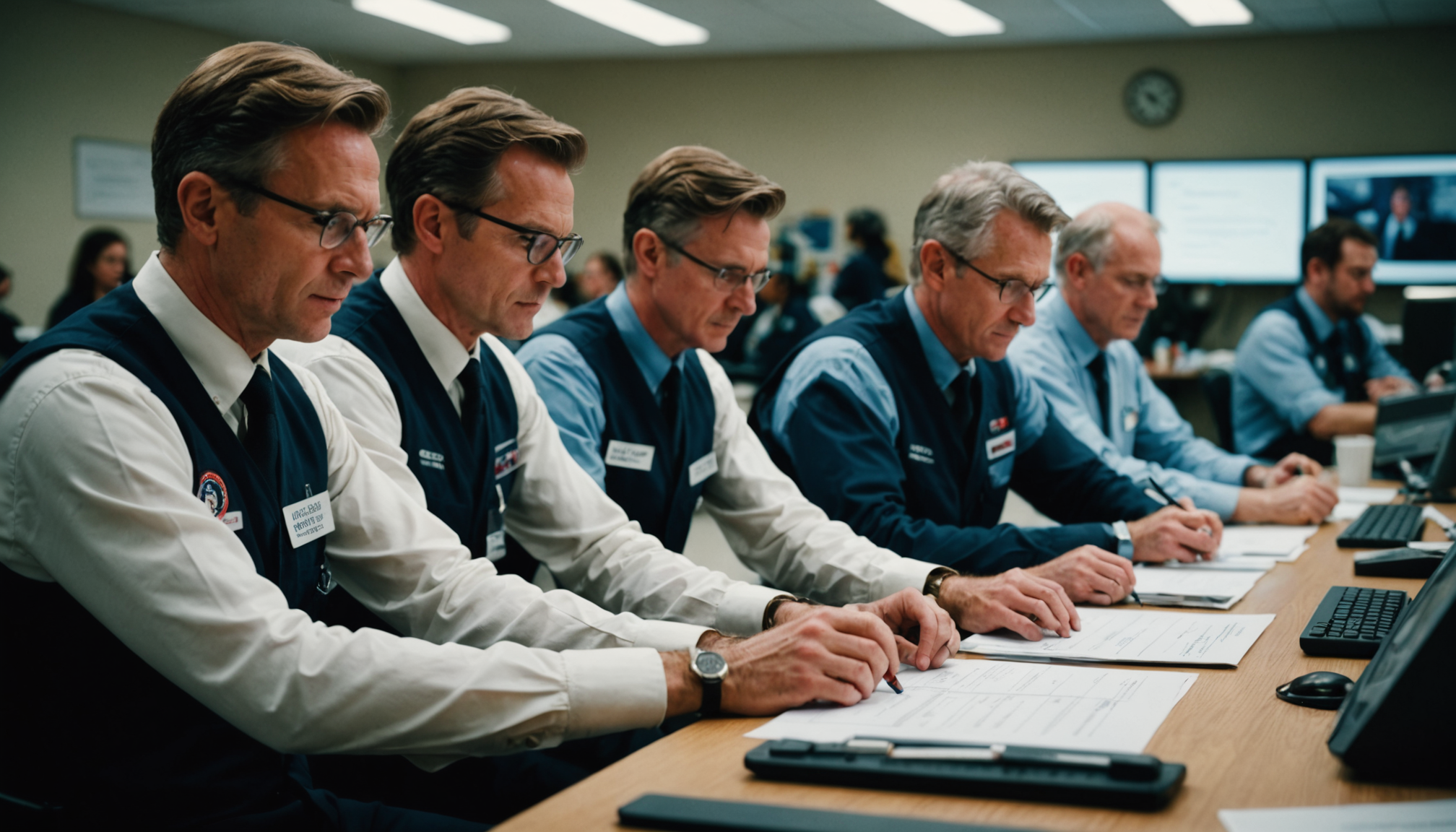
Report on the Impact of Funding Cuts on Humanitarian Aid Projects and the Role of Project Resource Optimization (PRO)
Introduction
In northeast Nigeria, critical stocks of therapeutic food designed to treat malnourished children and pregnant women are depleting rapidly. This shortage is a direct consequence of funding interruptions affecting humanitarian projects, notably those supported by the US Agency for International Development (USAID). The situation highlights urgent challenges in achieving Sustainable Development Goals (SDGs), particularly SDG 2 (Zero Hunger), SDG 3 (Good Health and Well-being), and SDG 6 (Clean Water and Sanitation).
Background: Funding Disruptions and Their Consequences
Action Against Hunger (ACF), a nonprofit organization combating malnutrition, has faced intermittent suspensions of its USAID funding, impeding its ability to procure therapeutic food sachets during peak malnutrition seasons. This disruption exemplifies broader issues caused by the dismantling of USAID under the previous US administration, which has left numerous lifesaving aid projects in limbo and in need of additional resources.
Project Resource Optimization (PRO): A Strategic Response
In response, a coalition of former USAID staff established Project Resource Optimization (PRO) to bridge the gap between large donors and cost-effective humanitarian projects. The initiative focuses on maximizing the impact of available resources to save lives and sustain critical operations aligned with multiple SDGs.
Objectives of PRO
- Facilitate funding for ongoing humanitarian projects addressing malnutrition, extreme poverty, and disease prevention (SDG 1, SDG 2, SDG 3).
- Expand private philanthropy engagement to support international aid efforts.
- Provide a vetted list of urgent projects to guide donors towards impactful contributions.
Key Activities
- Vetting and compiling a comprehensive list of urgent and cost-effective projects, known as the Urgent & Vetted Projects list.
- Matching donors with projects requiring immediate funding.
- Launching an online crowdfunding platform to enable smaller donors to contribute to the Rapid Response Fund supporting projects in Sudan, Haiti, Nigeria, and other countries.
Impact on Humanitarian Projects and SDGs
Case Study: Mali
The Alliance for International Medical Action (ALIMA) in Mali faced potential shutdown of its medical care programs for vulnerable populations, including children under five, pregnant women, and internally displaced persons. Over half of ALIMA’s Mali budget was previously funded by USAID. Funding suspensions threatened the organization’s credibility and relationships with local health authorities, critical for achieving SDG 3 (Good Health and Well-being).
Thanks to a new grant facilitated through PRO’s analysis, ALIMA secured funding to provide:
- 70,000 medical consultations
- Treatment for over 5,000 children with severe acute malnutrition
Case Study: Nigeria
ACF is close to securing funding to continue one of its malnutrition projects through PRO coordination. The funds will procure ready-to-use therapeutic food (RUTF) during the critical months of June to September, when malnutrition and food insecurity peak. This support aligns with SDG 2 (Zero Hunger) and SDG 3 (Good Health and Well-being).
However, the funding is limited to this project alone, while ACF’s broader programs providing food assistance, clean water, sanitation (SDG 6), and health clinic support remain underfunded.
Challenges and Opportunities
- Challenges: The suspension of funding leads to the risk of project closures, loss of community trust, and setbacks in health and nutrition outcomes.
- Opportunities: PRO leverages existing infrastructure, trained staff, and procured commodities, reducing fixed costs and enabling rapid project continuation.
- Engagement of new private donors, including family foundations and individuals, increases the pool of resources for international aid.
Conclusion
Project Resource Optimization exemplifies an innovative approach to sustaining critical humanitarian aid projects amidst funding disruptions. By aligning efforts with the Sustainable Development Goals, PRO contributes to saving lives, reducing hunger, improving health, and supporting vulnerable communities worldwide. Continued support and expansion of such initiatives are essential to prevent the collapse of vital services and to advance global development objectives.
1. Sustainable Development Goals (SDGs) Addressed or Connected
- SDG 2: Zero Hunger – The article discusses combating malnutrition in children and pregnant women, highlighting the urgent need for therapeutic food and nutrition programs.
- SDG 3: Good Health and Well-being – The provision of medical care, disease prevention, and health services to vulnerable populations such as children under five, pregnant women, and internally displaced people is emphasized.
- SDG 6: Clean Water and Sanitation – Mention of programs providing clean water and sanitation in northern Nigeria.
- SDG 1: No Poverty – The article refers to tackling extreme poverty through aid projects.
- SDG 17: Partnerships for the Goals – The initiative to connect donors with cost-effective projects and the collaboration between former USAID staff and partner organizations reflect partnerships for sustainable development.
2. Specific Targets Under Those SDGs Identified
- SDG 2: Zero Hunger
- Target 2.1: End hunger and ensure access by all people to safe, nutritious, and sufficient food all year round.
- Target 2.2: End all forms of malnutrition, including achieving targets on stunted and wasted children under 5 years of age.
- SDG 3: Good Health and Well-being
- Target 3.1: Reduce the global maternal mortality ratio.
- Target 3.2: End preventable deaths of newborns and children under 5 years of age.
- Target 3.3: End epidemics of communicable diseases and strengthen prevention and treatment.
- SDG 6: Clean Water and Sanitation
- Target 6.1: Achieve universal and equitable access to safe and affordable drinking water.
- Target 6.2: Achieve access to adequate and equitable sanitation and hygiene.
- SDG 1: No Poverty
- Target 1.2: Reduce at least by half the proportion of men, women and children living in poverty in all its dimensions.
- SDG 17: Partnerships for the Goals
- Target 17.3: Mobilize additional financial resources for developing countries from multiple sources.
- Target 17.16: Enhance the global partnership for sustainable development.
3. Indicators Mentioned or Implied to Measure Progress
- SDG 2 Indicators
- Prevalence of undernourishment and malnutrition in children under five (implied by focus on therapeutic food and malnutrition treatment).
- Number of children treated for severe acute malnutrition (explicitly mentioned: 5,000 children treated by ALIMA).
- SDG 3 Indicators
- Maternal mortality ratio (implied by focus on pregnant women’s health).
- Under-five mortality rate (implied by medical consultations and health services provided to children under five).
- Number of medical consultations provided (explicit: 70,000 medical consultations by ALIMA).
- SDG 6 Indicators
- Proportion of population using safely managed drinking water services (implied by programs providing clean water).
- Proportion of population using safely managed sanitation services (implied by sanitation programs).
- SDG 17 Indicators
- Amount of financial resources mobilized from private philanthropy and donors (implied by crowdfunding and donor matchmaking efforts).
- Number of partnerships formed between organizations and donors (implied by PRO initiative and Urgent & Vetted Projects list).
4. Table: SDGs, Targets and Indicators
| SDGs | Targets | Indicators |
|---|---|---|
| SDG 2: Zero Hunger |
|
|
| SDG 3: Good Health and Well-being |
|
|
| SDG 6: Clean Water and Sanitation |
|
|
| SDG 1: No Poverty |
|
|
| SDG 17: Partnerships for the Goals |
|
|
Source: cnn.com







